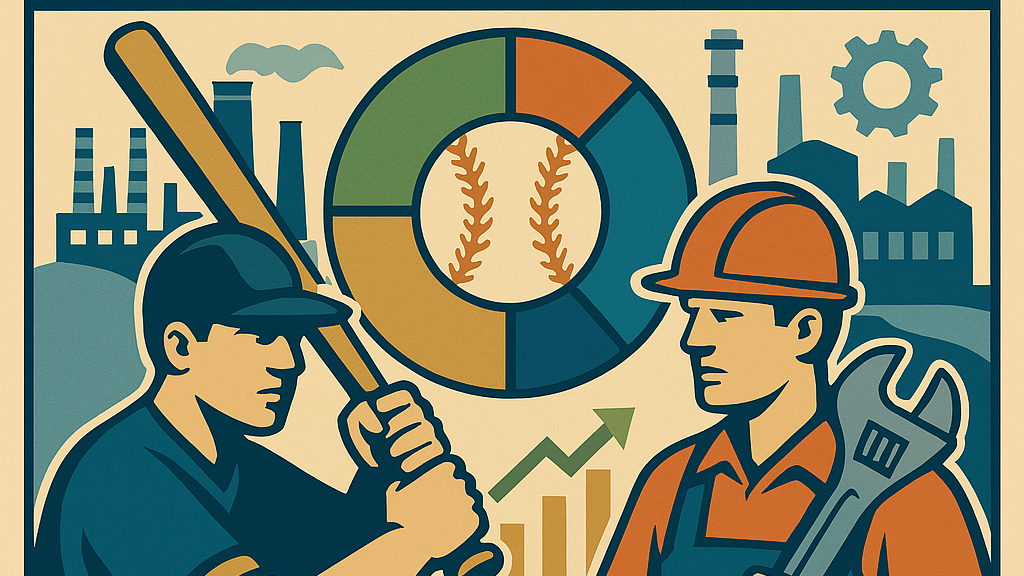
-
October 8, 2025
- 0 Comment
Maintenance Moneyball: 5 Steps to Turn Strategy into Reliability Success
In 2002, the Oakland Athletics made baseball history-not by winning the World Series, but by proving that strategy could outperform budget. With one of the lowest payrolls in Major League Baseball, General Manager Billy Beane built a competitive team by focusing not on star power, but on base hits. He didn’t chase home runs-he engineered consistency.
This story isn’t just about baseball. It’s about maintenance. Because every plant, mill, or facility already has a team on the field. The question is: are we managing them to win?
Maintenance Isn’t Broken-Your Strategy Might Be
Most organizations accept that equipment needs maintenance. Too often, though, maintenance is treated as a reactive necessity rather than a strategic advantage. We fix what breaks but rarely ask why it broke, why it was a surprise, and how we could have prevented it.
Billy Beane didn’t just hire players. He built a system. He defined what success looked like (base hits), chose metrics that supported that outcome, and aligned every role to support the desired outcome. Maintenance leaders must do the same.
From Fixing to Maintaining: A Reliability Mindset Shift
You may not like it, but fixing broken equipment is the result of failing to maintain it. Waiting for a breakdown before acting is like leaving your ace on the mound after he’s thrown 120 pitches and walked three batters. You’re not managing performance-you’re reacting to failure. We must reframe maintenance and reimagine it as a strategic multiplier that preserves uptime, protects assets, and increases production capacity.
But that shift requires more than good intentions. It demands:
- Clear goals and performance standards
- Role-specific accountability
- Tools that are navigable, exportable, and team-owned
- A culture that sees every failure as a learning opportunity
Why Preventive Maintenance Programs Fail-and How to Build One That Works
Preventive maintenance programs often collapse under their own weight. Not because the idea is flawed, but because the execution is misaligned with it purpose. Common pitfalls include:
- Conflating PM with Insurance
- No formal goals or strategic priorities
- Inadequate training and retention practices
- Poor data quality and inconsistent feedback loops
- Leadership underestimating the effort required to sustain PM discipline
To succeed, we must build PM programs like a team strategy, not a generic checklist. That means defining what “good” looks like in every step, consistently measuring its value, and empowering every player to contribute.
Accountability and Dependency: The Hidden Drivers of Reliability
Leadership isn’t solely about setting goals-it’s about owning outcomes. And that means recognizing that success depends on the team’s ability to execute. This dependency isn’t a weakness-it’s a signal that the system is working.
Jim Collins said it best: “Get the right people on the bus, in the right seats, then figure out where to go.” In maintenance, that means hiring for reliability thinking, training for ownership, and managing with clarity.
Maintenance as a System, Not Just a Department
Keith Mobley once wrote, “Instability is caused by inconsistencies in decision-making, planning, scheduling, execution and measurement of all business and work activities-not just maintenance-from the boardroom to the factory floor.”
Maintenance failures are often symptoms of deeper system design flaws. If production always has a goal and maintenance doesn’t, guess which one gets prioritized. To change that, leaders must:
- Define maintenance goals that are visible and measurable
- Compare short-term production gains to long-term reliability losses
- Create decision frameworks that balance urgency with risk
Reliability Is a Team Sport: Everyone Has a Role
Maintenance isn’t just the job of technicians-it’s a shared responsibility. Operators, planners, supervisors, and executives all influence reliability outcomes. Like HR responsibilities for managers, reliability must be embedded across roles.
That means:
- Operators performing basic inspections and reporting anomalies
- Planners aligning schedules with asset risk profiles
- Leaders model reliability thinking in every decision
The Moneyball Playbook for Maintenance Success
Establish clear goals and objectives – Define what success looks like. Make it measurable. Make it visible.
Design tools that drive action – Use dashboards, failure mode libraries, checklists, and asset data to drive actions. (No actions = no change)
Use every failure as a learning opportunity – Compare every breakdown to PM tasks. Refine standards. Close the loop or consider another strategy (CBM, PdM?)
Improve data quality through use – Don’t wait for perfect data. Use what you have then refine and improve it through feedback. (Refer to rule 2.)
Align strategy with daily behavior – Make reliability part of the daily rhythm and goal, not just a monthly report.
Conclusion: You Already Have the Team-Now Build the System
Billy Beane didn’t win by hiring better players. He won by managing better. You don’t need the highest-paid tradesmen to build a world-class maintenance team. You need clarity, strategy, and systems that better enable your players to get on base time and time again.
Maintenance management isn’t about eliminating risk. It’s about managing it with intention. And when every player knows the goal, understands their role, and has the tools to succeed, you don’t just improve performance-you change the game.
If our team can help yours to incorporate clarity, strategy, or systems into your maintenance program, let us know. It’s one of the things we do best.

